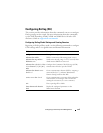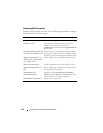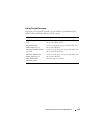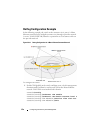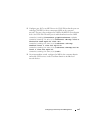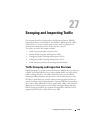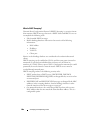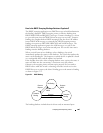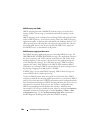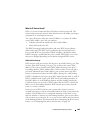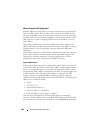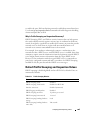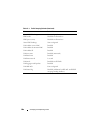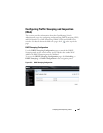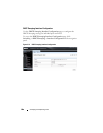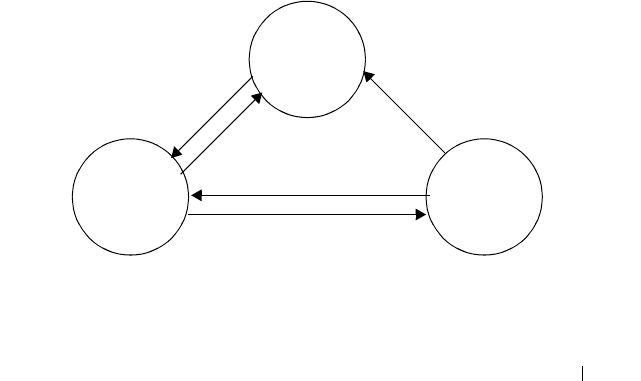
Snooping and Inspecting Traffic 881
How Is the DHCP Snooping Bindings Database Populated?
The DHCP snooping application uses DHCP messages to build and maintain
the binding’s database. DHCP snooping creates a tentative binding from
DHCP DISCOVER and REQUEST messages. Tentative bindings tie a client
to a port (the port where the DHCP client message was received). Tentative
bindings are completed when DHCP snooping learns the client’s IP address
from a DHCP ACK message on a trusted port. DHCP snooping removes
bindings in response to DECLINE, RELEASE, and NACK messages. The
DHCP snooping application ignores the ACK messages as a reply to the
DHCP Inform messages received on trusted ports. You can also enter static
bindings into the binding database.
When a switch learns of new bindings or loses bindings, the switch
immediately updates the entries in the database. The switch also updates the
entries in the binding file. The frequency at which the file is updated is based
on a configurable delay, and the updates are batched.
If the absolute lease time of the snooping database entry expires, that entry is
removed. Make sure the system time is consistent across the reboots.
Otherwise, the snooping entries will not expire properly. If a host sends a
DHCP release while the switch is rebooting, when the switch receives the
DHCP discovery or request, the client’s binding goes to the tentative binding
as shown in Figure 27-1.
Figure 27-1. DHCP Binding
The binding database includes data for clients only on untrusted ports.
Tentative
Binding
Complete
Binding
No Binding
ACK
Discover
Discover
Request
Release
NACK
Decline
NACK



